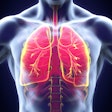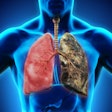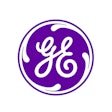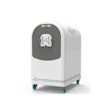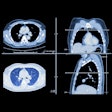While powering CT systems down during extended idle periods is the common recommendation for reducing energy consumption, using a new power-save mode with rapid reactivation could be more practical, researchers have found.
Reducing the energy consumption of radiology scanners is imperative for both cost and environmental considerations, noted a team led by Paul Hehenkamp, MD, of University Hospital Basel in Switzerland. The group explained that while turning off CT systems is a common approach for reducing power consumption during extended periods of inactivity, it's not practical during the workday with short intervals between exams.
The investigators' analysis was published November 11 in the American Journal of Roentgenology (AJR) and included two authors from Computed Tomography, Siemens Healthineers AG in Forchheim, Germany.
Hehenkamp and colleagues examined a new strategy for reducing energy consumption -- namely, an intermediate power-save mode, which maintains the CT system in a semiactive state and immediately reactivates when needed for scanning -- using a Siemens Healthineers SOMATOM X.ceed CT scanner. The mode requires no hardware components and can be installed during standard scanner operating system software upgrades.
The group extracted power measurements (in kilowatts) from the scanner’s sensor at one-second reconstructed intervals for all regular workdays (excluding weekends, holidays, and scheduled maintenance) during the 28-week period of the study and categorized them as active, idle, or power-save states.
After the study period ended, the researchers distributed an electronic questionnaire to all staff who had operated the CT scanner. The survey consisted of questions regarding the operator’s experiences with the power-save mode and its potential implications for workflow. Of 25 technologists, 19 completed the survey, and none reported any workflow disruption or technical issues associated with the power-save mode.
Hehenkamp's and colleagues' analysis included the assessment of power measurements from 124 regular workdays. The scanner was on for a total of 1,253 hours during the study period, which comprised 481 hours in the power-save state (38.4%), 425 hours in the active state (33.9%), and 347 hours in the idle state (27.7%). Therefore, the CT scanner was in a nonproductive state 66.1% of the time, with power-save accounting for more than half of that time (58.1%).
The mean power draws across the study period were 4.8 kW for the active state, 2.1 kW for the idle state, and 1.6 kW for the power-save state. The mean power draw for the power-save state was 26.8% lower than that of the idle state, according to the group.
“Given this difference, the power save mode was estimated to facilitate energy consumption savings of 15.6% and 7.2% relative to extrapolated nonproductive and total energy consumption, respectively,” it wrote.
The authors added that the prototype's five-minute minimum delay before it would go into power-save state could limit energy savings, especially for higher-volume practices with more and shorter inter-exam intervals. They noted that the power-safe mode could be most advantageous for low- or medium-volume facilities or those with 24-hour CT scanner operation.
The full study is available here.










